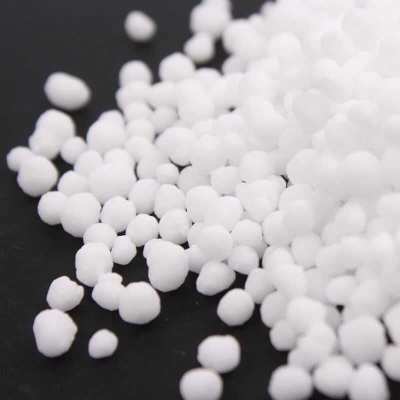-
Categories
-
Pharmaceutical Intermediates
-
Active Pharmaceutical Ingredients
-
Food Additives
- Industrial Coatings
- Agrochemicals
- Dyes and Pigments
- Surfactant
- Flavors and Fragrances
- Chemical Reagents
- Catalyst and Auxiliary
- Natural Products
- Inorganic Chemistry
-
Organic Chemistry
-
Biochemical Engineering
- Analytical Chemistry
- Cosmetic Ingredient
-
Pharmaceutical Intermediates
Promotion
ECHEMI Mall
Wholesale
Weekly Price
Exhibition
News
-
Trade Service
Flexible high-efficiency solar cells have important applications in aerospace, new energy vehicles, smart wearable equipment and other fields
.
Aiming at the technical problems of high-quality growth of photocurrent-matched multi-junction materials and the peeling and transfer of large-size epitaxial materials in the preparation of flexible and high-efficiency III-V compound semiconductor multi-junction solar cells, researcher, Suzhou Institute of Nanotechnology and Nano-Bionics, Chinese Academy of Sciences The Lu Shulong team has conducted long-term research and has made important progress in the near future
.
Based on the 33.
13% inverted triple junction GaInP/GaAs/InGaAs (J.
Cryst.
Growth 2019, 513: 38) flexible solar cells prepared based on the two-step bonding transfer method, after years of accumulation, the researchers proposed electroplating and low temperature The epitaxial film transfer scheme combined with bonding optimizes the preparation process of flexible and high-efficiency solar cells, with strong batch capacity, high yield, and softer cells
.
The flexible high-efficiency three-junction solar cell prepared by this technology has a photoelectric conversion efficiency of 34.
68% and a weight areal density of only 169 g/m2
.
The technology has applied for national invention patents and entered the United States, Japan, and the European Union through PCT international patents
.
In the study of flexible four-junction solar cells, the researchers focused on the key problem of the low short-circuit current density of the inverted direct-grown AlGaInP/AlGaAs/InGaAs/InGaAs four-junction solar cells but the normal shape of the JV curve.
Failure analysis research
.
The results show that the AlGaInP top cell is the main cause of the decrease in current density
.
The lower external quantum efficiency indicates that the minority carriers of the AlGaInP material cannot be collected effectively, resulting in a decrease in the short-circuit current density; the secondary ion mass spectrometry (SIMS) results show that the failed battery is mainly due to the introduction of higher levels during the growth of the AlGaInP material.
Concentration of oxygen is easy to form Al-O deep-level defects
.
By optimizing the growth of the AlGaInP sub-cell material, based on the photoelectric conversion efficiency of 25% (without reflective film) in the early stage (Sol.
Energy.
Mat.
Sol.
Cell 2020, 208: 110398), the efficiency is further obtained at 34.
9%, open circuit A four-junction solar cell with a voltage of 3.
53V
.
Related research results are titled Failure Analysis of Thin Film Four-Junction Inverted Metamorphic Solar Cells and published online on Prog.
Photovolt.
Res.
Appl
.
Aiming at the difficulty of direct measurement of the sub-cell characteristics of multi-junction tandem solar cells, the researchers used the principle of photoelectric reciprocity of external quantum efficiency (EQE) and electroluminescence spectroscopy (EL), calculated and analyzed the photoelectric characteristics of each sub-cell, and realized the target To guide the optimal design of multi-junction solar cells
.
The related research results are titled Subcells Analysis of Thin Film Four-Junction Solar Cells Using Optoelectronic Reciprocity Relation and published on Sol.
RRL
.
The main authors of the above papers are Long Junhua, a PhD student in Suzhou Nano Institute, and others, and Lu Shulong is the corresponding author of the paper
.
The research work is supported by key and general projects of the National Natural Science Foundation of China, national key research and development projects, enterprise cooperation, and all self-funded projects
.
Figure 1.
JV curve and structure diagram of IMM four-junction solar cell Figure 2.
EQE curve of IMM four-junction solar cell and EL emission curve with different injection currents Figure 3.
JV characteristic curve of sub-cell calculated by the principle of EL and EQE photoelectric reciprocity
.
Aiming at the technical problems of high-quality growth of photocurrent-matched multi-junction materials and the peeling and transfer of large-size epitaxial materials in the preparation of flexible and high-efficiency III-V compound semiconductor multi-junction solar cells, researcher, Suzhou Institute of Nanotechnology and Nano-Bionics, Chinese Academy of Sciences The Lu Shulong team has conducted long-term research and has made important progress in the near future
.
Based on the 33.
13% inverted triple junction GaInP/GaAs/InGaAs (J.
Cryst.
Growth 2019, 513: 38) flexible solar cells prepared based on the two-step bonding transfer method, after years of accumulation, the researchers proposed electroplating and low temperature The epitaxial film transfer scheme combined with bonding optimizes the preparation process of flexible and high-efficiency solar cells, with strong batch capacity, high yield, and softer cells
.
The flexible high-efficiency three-junction solar cell prepared by this technology has a photoelectric conversion efficiency of 34.
68% and a weight areal density of only 169 g/m2
.
The technology has applied for national invention patents and entered the United States, Japan, and the European Union through PCT international patents
.
In the study of flexible four-junction solar cells, the researchers focused on the key problem of the low short-circuit current density of the inverted direct-grown AlGaInP/AlGaAs/InGaAs/InGaAs four-junction solar cells but the normal shape of the JV curve.
Failure analysis research
.
The results show that the AlGaInP top cell is the main cause of the decrease in current density
.
The lower external quantum efficiency indicates that the minority carriers of the AlGaInP material cannot be collected effectively, resulting in a decrease in the short-circuit current density; the secondary ion mass spectrometry (SIMS) results show that the failed battery is mainly due to the introduction of higher levels during the growth of the AlGaInP material.
Concentration of oxygen is easy to form Al-O deep-level defects
.
By optimizing the growth of the AlGaInP sub-cell material, based on the photoelectric conversion efficiency of 25% (without reflective film) in the early stage (Sol.
Energy.
Mat.
Sol.
Cell 2020, 208: 110398), the efficiency is further obtained at 34.
9%, open circuit A four-junction solar cell with a voltage of 3.
53V
.
Related research results are titled Failure Analysis of Thin Film Four-Junction Inverted Metamorphic Solar Cells and published online on Prog.
Photovolt.
Res.
Appl
.
Aiming at the difficulty of direct measurement of the sub-cell characteristics of multi-junction tandem solar cells, the researchers used the principle of photoelectric reciprocity of external quantum efficiency (EQE) and electroluminescence spectroscopy (EL), calculated and analyzed the photoelectric characteristics of each sub-cell, and realized the target To guide the optimal design of multi-junction solar cells
.
The related research results are titled Subcells Analysis of Thin Film Four-Junction Solar Cells Using Optoelectronic Reciprocity Relation and published on Sol.
RRL
.
The main authors of the above papers are Long Junhua, a PhD student in Suzhou Nano Institute, and others, and Lu Shulong is the corresponding author of the paper
.
The research work is supported by key and general projects of the National Natural Science Foundation of China, national key research and development projects, enterprise cooperation, and all self-funded projects
.
Figure 1.
JV curve and structure diagram of IMM four-junction solar cell Figure 2.
EQE curve of IMM four-junction solar cell and EL emission curve with different injection currents Figure 3.
JV characteristic curve of sub-cell calculated by the principle of EL and EQE photoelectric reciprocity







